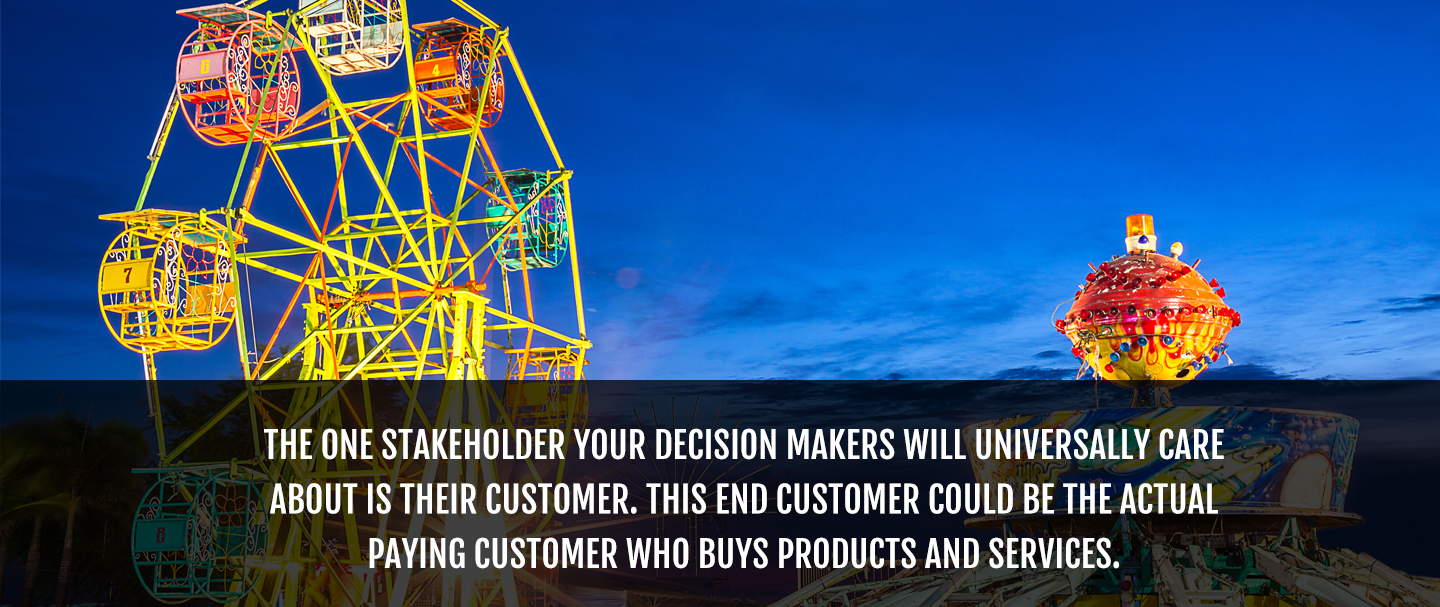“Whether your customer is B2C or B2B, every company has customers. Make this year’s strategy all about those customers.”
One of the many things we love about sales is a pervasive willingness to try new things. We’re always looking for a new skill, tool or strategy to up our game – increasing revenue, building competitive advantage and helping our companies grow.
Lately, we’re seeing a disproportionate focus toward developing the least advantageous stage of the sales cycle – the “Close”. We want to invite you to consider a completely different focus for your 2018 strategy in order to realize the biggest gains.
When we ask salespeople we’re preparing to work with which aspect of their game they’d most like help to develop, they tell us “Closing.” They usually want new tips and tools that help them accelerate decision-making among their customers to close out their pipeline faster.
We get it.
The sooner we close a deal, the sooner we can give energy and attention to the next customer and increase total sales within a given period of time. We see this strategy echoed among sales managers, who tend to focus their coaching conversations solely on the forecast: “How soon can you close this deal?” or, “What’s your number this week?”
Effectively, organizations are looking to shorten the discovery cycle to get their reps to close as quickly as possible.
Yet, if we take a step back, most of us in sales understand these strategies to be backward. We know from experience that discovery is the high leverage phase we should be targeting. We know that when we do truly great discovery, everything gets better.

Sell something already
Like Tiffani Bova, Global Customer Growth and Innovation Evangelist of Salesforce, recently reminded participants at this year’s Dreamforce: “Nothing happens until someone sells something.”
We’ve seen countless sales professionals – at Salesforce and elsewhere – turn this logic on its head and see huge results. Here’s their strategy: Focus your discovery on your customer’s customers. This simple strategy solves a number of issues we run into with typical discovery.
Most often, we focus the majority of our discovery on the decision-makers in our customer organization. We dutifully respond to all points outlined in their RFP, or we ask them great questions to get at their pain points.
And, in so doing, we commoditize our solution, doing the exact same things our competition is doing and providing a similar solution for the customer to consider. Then, we begin to focus our energy on getting the “Close” and wonder why it’s taking so long. Enough of that.
The one stakeholder your decision-makers will universally care about is their customer. This end customer could be the actual paying customer who buys products and services. To the extent we assume decision makers understand these customers, we do so at our own peril. We believe it’s paramount that you seek these people out and explore their world.
When you do, you’ll invariably discover far more than your decision-makers understand and be able to come to the table with added value, a larger point of view and a unique perspective that your competitors won’t share.

Kick-ass discovery: An example
Brianna was early in her sales career at one of the largest software solutions companies. She was given a leading greeting card company as a greenfield account to see what she could do.
She immediately began to learn everything she could about the company’s customer experiences. She visited stores, she downloaded the company app, she made online purchases, she interviewed store employees and other customers.
By sharing some of the insights she gained along the way, she quickly found herself at a meeting with the company C-suite. Even then, she talked not about the amazing solutions she could sell. She talked about their customer experiences.
In particular, she juxtaposed the company’s stated strategy of appealing to millennials with her own experience – as a Millennial – and pointed out important areas where they could improve. In that meeting, she didn’t mention one product she had to offer; she only talked about them and how they could better serve their customers. She closed over $1 million in that account, which is considered one of the fastest zero to million dollar deals in the history of the company.
Whether your customer is B2C or B2B, every company has customers. Make this year’s strategy all about those customers. Go find them and find out what they care about. Notice how well your customer meets (or misses) their needs and bring these insights to the table. We guarantee that you will find larger opportunities and you will close deals faster.

